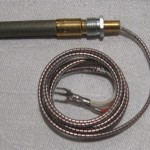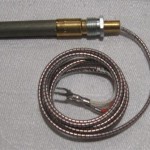Lopi Fireplace Insert Door Gaskets: A Comprehensive Guide
Lopi fireplace inserts are renowned for their efficiency and durability, effectively transforming existing fireplaces into powerful heating sources. A crucial component of their performance is the door gasket, a seemingly small element that plays a significant role in maintaining airtight seals, maximizing heat output, and ensuring safe operation. Understanding the function, maintenance, and replacement of Lopi fireplace insert door gaskets is essential for any owner seeking to optimize their heating experience and prolong the lifespan of their appliance.
This article provides a detailed exploration of Lopi fireplace insert door gaskets, covering their purpose, the materials they are made from, signs of wear and tear, replacement procedures, and best practices for maintenance. The intent is to equip Lopi fireplace insert owners with the knowledge necessary to properly care for this vital part and ensure the continued efficient and safe operation of their heating appliance.
The Critical Role of the Door Gasket
The primary function of a Lopi fireplace insert door gasket is to create an airtight seal between the door and the firebox. This seal is absolutely vital for several reasons. First, it prevents uncontrolled airflow into the firebox. Without a proper seal, excess air can fuel the fire, leading to rapid burning of fuel, reduced heat output, and potential over-firing of the appliance, creating a safety hazard. This uncontrolled burning also reduces the overall efficiency of the insert, requiring more fuel to achieve the same level of heat.
Second, a well-maintained door gasket prevents smoke and harmful gases from escaping into the living space. An airtight seal ensures that combustion byproducts are properly vented through the chimney system. A damaged or deteriorated gasket can allow these byproducts, including carbon monoxide, to leak into the home, posing a significant health risk. Carbon monoxide is odorless and colorless, making it difficult to detect without a dedicated detector.
Third, the gasket contributes to maintaining proper combustion efficiency. Controlled airflow, dictated in part by the airtight door seal, allows for optimal fuel-to-air ratio during combustion. This translates to cleaner burning, reduced creosote buildup in the chimney, and maximized heat extraction from the fuel. Proper combustion also means lower emissions, making the fireplace insert a more environmentally friendly heating option.
Finally, the gasket also plays a minor role in insulating the door itself, reducing heat loss through the glass and metal components. While the primary insulation is provided by the firebox design and internal baffling, the gasket contributes to minimizing heat transfer from the firebox to the external surfaces.
Materials and Construction of Lopi Door Gaskets
Lopi fireplace insert door gaskets are typically constructed from high-temperature resistant materials designed to withstand the extreme conditions within a wood or gas-burning appliance. The most common material used is fiberglass rope, often impregnated with graphite or other coatings to enhance its sealing properties and resistance to wear. Fiberglass is chosen for its ability to withstand temperatures up to 1000°F (538°C) or higher, making it suitable for the intense heat generated within a fireplace insert.
The specific dimensions and density of the gasket vary depending on the Lopi model. Gaskets are typically round or square in cross-section and come in various diameters or widths. Selecting the correct size and density is crucial for ensuring a proper seal. Using a gasket that is too small may not create a tight seal, while a gasket that is too large may make it difficult to close the door properly or could damage the door frame over time.
Some Lopi models may utilize ceramic fiber gaskets, which offer even higher temperature resistance than fiberglass. Ceramic fiber gaskets are often found in inserts designed for extended burn times or higher heat outputs. These gaskets are more durable and resistant to degradation from prolonged exposure to high temperatures, but they may also be more expensive than fiberglass options.
The gasket is usually held in place by a channel or groove around the door frame. High-temperature adhesive is used to secure the gasket within the channel, preventing it from dislodging during operation. The adhesive must also be capable of withstanding the high temperatures and repeated thermal cycling of the fireplace insert.
Identifying a Worn or Damaged Door Gasket
Recognizing the signs of a worn or damaged door gasket is crucial for maintaining the efficiency and safety of a Lopi fireplace insert. Regular visual inspections are recommended to identify potential problems early on. Several indicators suggest the need for gasket replacement.
One of the most obvious signs is visible damage to the gasket itself. Look for fraying, cracking, compression, or sections that are missing entirely. The gasket should appear uniform in thickness and consistently fill the channel around the door frame. If the gasket is flattened in certain areas or appears significantly thinner than it once was, it is likely losing its ability to create a proper seal.
Another key indicator is smoke escaping from around the door when the fireplace insert is in operation. Even a small amount of smoke leakage indicates a compromised seal. This is especially noticeable during startup or when adding fresh fuel to the fire. Smoke escaping into the room not only poses a health hazard but also signals inefficient combustion and wasted fuel.
A simple test to check the seal involves closing the door on a dollar bill (or any thin piece of paper) at various points around the door frame. If the dollar bill can be pulled out easily with the door closed, the gasket is not providing sufficient pressure and may need to be replaced. Repeat this test at several locations around the door frame to identify any areas where the seal is particularly weak.
Increased fuel consumption can also be a sign of a leaky door gasket. If the fireplace insert seems to be burning through wood (or using more gas) than usual, it could be due to uncontrolled airflow caused by a poor seal. The fire may burn hotter and faster, but the overall heat output may not be significantly increased.
Finally, excessive creosote buildup in the chimney can be an indirect indication of a leaking door gasket. Incomplete combustion due to uncontrolled airflow can lead to the formation of more creosote, increasing the risk of chimney fires. If chimney inspections reveal a significant increase in creosote accumulation, it is important to check the door gasket and other components of the fireplace insert to identify potential causes.
Replacing the Lopi Fireplace Insert Door Gasket
Replacing a Lopi fireplace insert door gasket is a relatively straightforward process that can be accomplished by most homeowners with basic tools and some patience. However, it is essential to follow the manufacturer's instructions and take appropriate safety precautions. Before starting any work, ensure the fireplace insert is completely cool to prevent burns. Disconnect the gas supply if applicable, and wear gloves and eye protection to protect against debris and potential irritants.
The first step is to remove the old gasket. This usually involves pulling it out of the channel or groove around the door frame. A putty knife or similar tool can be helpful in loosening the old adhesive and dislodging the gasket. Be sure to remove all traces of the old gasket and adhesive from the channel to ensure a clean surface for the new gasket.
Next, clean the channel thoroughly. Use a wire brush or sandpaper to remove any remaining adhesive residue, rust, or other debris. A clean surface is essential for proper adhesion of the new gasket. Wipe the channel with a clean cloth and denatured alcohol to remove any lingering dust or grease.
Apply a thin bead of high-temperature silicone adhesive to the channel. Use an adhesive specifically designed for fireplace gaskets, as other adhesives may not be able to withstand the high temperatures. Follow the manufacturer's instructions for applying the adhesive. Be careful not to apply too much adhesive, as this can make it difficult to close the door properly.
Press the new gasket firmly into the channel, ensuring it is fully seated and evenly distributed. Overlap the ends of the gasket slightly where they meet, and trim any excess with a sharp knife or scissors. Some installers recommend applying a small amount of adhesive to the overlapping ends to ensure a secure connection.
Allow the adhesive to cure completely before using the fireplace insert. Refer to the adhesive manufacturer's instructions for the recommended curing time, which is typically 24-48 hours. During this time, keep the door closed to allow the gasket to properly adhere to the door frame.
After the adhesive has cured, test the door seal by closing the door on a dollar bill, as described earlier. If the seal is tight and consistent around the entire door frame, the replacement has been successful. If any areas still show signs of leakage, repeat the process in those specific areas. If replacing the gasket seems daunting, consult a qualified professional who can perform the task safely and effectively.
Maintaining Your Lopi Door Gasket for Longevity
Proper maintenance can significantly extend the lifespan of a Lopi fireplace insert door gasket and ensure optimal performance. Regular visual inspections are the key to identifying potential problems early on. Check the gasket for signs of wear and tear at least once a month during periods of frequent use. Address any minor issues promptly to prevent them from escalating into more serious problems.
Avoid slamming the door of the fireplace insert. Repeated forceful closures can compress and damage the gasket over time. Close the door gently and deliberately to minimize stress on the gasket and door frame.
Clean the glass on the fireplace insert door regularly. Excessive soot buildup on the glass can make it difficult to visually inspect the gasket properly. Use a fireplace glass cleaner specifically designed for this purpose, and follow the manufacturer's instructions. Keeping the glass clean also improves the aesthetic appeal of the fireplace insert.
Consider applying a gasket sealant or conditioner to the gasket periodically. These products are designed to rejuvenate and protect the gasket, preventing it from drying out and cracking. Follow the manufacturer's instructions for applying the sealant or conditioner. These products can help maintain the flexibility and sealing properties of the gasket.
If the fireplace insert is not used for extended periods, such as during the summer months, consider opening the door slightly to allow air to circulate around the gasket. This can help prevent the gasket from becoming compressed and sticking to the door frame. However, be sure to close the door before using the fireplace insert to ensure a proper seal.
By following these maintenance tips, Lopi fireplace insert owners can prolong the life of their door gaskets and ensure the continued efficient and safe operation of their heating appliances. Regular inspections and prompt attention to any signs of wear and tear will help prevent costly repairs and maximize the benefits of a Lopi fireplace insert.

Best Outdoor Wood Furnace And Parts

Lopi Rope Door Gasket 7 8 X 72 99900406
Lopi Liberty Freedom Bay Glass Door Gasket Wood Stove Fireplace

Lopi Wood Stove Door Gasket Kit 6ft 7 8in And Cement Tube

Door And Glass Inspection Adjusting The Cam Lopi Revere Owner S Manual Page 20 Manualslib

Lopi Endeavor Nexgen Fyre Byler S Stove Pe

Lopi Large Flush Wood Insert With Rectangular Door Epa Decertification Msrp 5438 On 4838 Save 633 Mazzeo S Stoves Fireplaces

Lopi Archives Flame Connection

Lopi Fpx Fireplace Xtrordinair Large Flush Rectangular Nexgen Fyre Epa Decertification Mazzeo S Stoves Fireplaces

Replace Door Gasket On Your Stove Wood Pellet Coal
Related Posts








